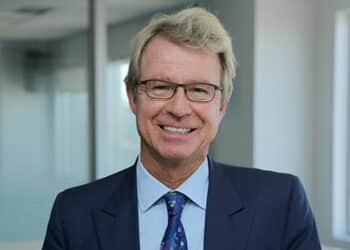In a new report, Gold’s reign, bitcoin’s rise: The future of central bank reserves by 2030, the investment bank outlined why bitcoin and gold may soon appear side by side on central bank balance sheets.
The report arrives in a historic week for both assets, with bitcoin hitting a record high of US$126,000 and gold soaring past US$4,000.
“The case for bitcoin as a strategic reserve is strengthening. As bitcoin’s liquidity deepens and regulation matures, bitcoin is emerging as a more legitimised global asset class,” the report stated.
Deutsche Bank highlighted bitcoin’s potential as a reserve asset, noting its similarities to gold make it an increasingly appealing store of value.
“Like gold, bitcoin has faced scepticism and speculation – yet both evolved from doubt to mainstream acceptance.”
According to the report, bitcoin’s fixed supply is a major factor, offering “disinflationary benefits and long-term scarcity value.”
Its decentralised nature further adds to its appeal, with portability and accessibility described as “increasingly valuable in times of conflict”.
Deutsche Bank also pointed to bitcoin’s liquidity, low correlation with other asset classes and growing psychological momentum.
Regulatory momentum plays a key role too, with pro-cryptocurrency policies expanding acceptance among governments, institutions, corporations and investors.
Meanwhile, the US Securities and Exchange Commission’s approval of spot bitcoin ETFs in January 2024 marked a turning point, accelerating bitcoin’s path towards legitimacy. Bitcoin now accounts for 58 per cent of the total cryptocurrency market cap, with daily transactions averaging over 444,000.
Deutsche Bank said bitcoin’s 2024 rise underscores growing institutional adoption and its emerging role as a potential macro hedge – adding that both bitcoin and gold have seen record flows this year.
“Gold has long anchored central bank balance sheets”, Deutsche Bank said, “but until the 2000s, it was valued for stabilising payments than for its safe-haven properties.”
The report noted that gold, like bitcoin, has experienced periods of volatility and underperformance despite its differing behaviour from equities and bonds.
“Yet as the metal matured, its price and volatility began to decouple,” the report said. “Today, gold is back with an estimated 36,000 tonnes held in central bank reserves as geopolitical tensions, dollar weakness and trade uncertainty drive record buying.
“Tracing gold’s journey to safe-haven status – and bitcoin’s similar path, we see that the two assets have had strikingly similar trajectories.”
Deutsche Bank concluded that bitcoin and gold act as complementary diversifiers – both serving as “safe-haven” assets with low correlation to other classes, limited supply and value as hedges against inflation and geopolitical shocks.
The report acknowledged criticism of bitcoin, particularly the argument that it’s “too volatile for long-term value growth” and lacks intrinsic backing.
However, Deutsche Bank noted bitcoin’s 90-day volatility is nearing record lows, falling to 26 per cent even as prices exceeded US$125,000 in October.
“This signals a gradual decoupling between spot price and volatility, as institutional adoption grows,” the report said.
Other concerns include limited usage, perceived risk and speculation, with 44 per cent of survey respondents viewing cryptocurrencies as too risky for broader adoption.
Critics also cite bitcoin’s speculative nature, cyber vulnerability and liquidity risks – but Deutsche Bank believes the case for its reserve role is gaining strength.
“The US executive order to establish a strategic bitcoin reserve could signal confidence in crypto’s future and set international financial standards, much as gold reserves do today,” the report said.
Governments currently hold 517,296 bitcoins – about 2.5 per cent of the total 21 million supply.
The largest holders include the United States, China, the United Kingdom, Ukraine, Bhutan, UAE, and El Salvador.
“The US executive order to establish a strategic bitcoin reserve could signal confidence in crypto’s future and set international financial standards, much as gold reserves do today,” the report stated.
However, the ECB has rejected bitcoin as a reserve, asserting central bank reserves must be “liquid, secure and safe,” while the Federal Reserve has similarly ruled out holding it.
“Ultimately, bitcoin and gold may both feature on central bank balance sheets by 2030,” the report said.
In the meantime, companies are outpacing central banks in bitcoin adoption, as investors seek liquid alternatives to cash and treasuries.
Michael Saylor’s MicroStrategy has aggressively accumulated bitcoin as a treasury asset and currently holds 640,031 coins, followed by MARA Holdings, XXI, and Metaplanet with between 30,000 and 53,000.
“[Bitcoin’s] propelled by wishful thinking that becomes self-fulfilling, i.e. ‘the Tinkerbell Effect’,” the report stated.
As for the US dollar, Deutsche Bank maintains it will remain dominant.
“Neither bitcoin nor gold will entirely replace the US dollar; digital assets should remain complementary to national currencies.”
“Bitcoin and other alternative assets will continue to compete for our attention. US-led adoption can facilitate a longer-term transition for bitcoin to evolve from a speculative investment into a legitimised, key component of global finance,” the report said.
BTC Markets head of finance Charlie Sherry said gold and bitcoin are both rallying on the back of macroeconomic uncertainty, but they’re playing different roles.






